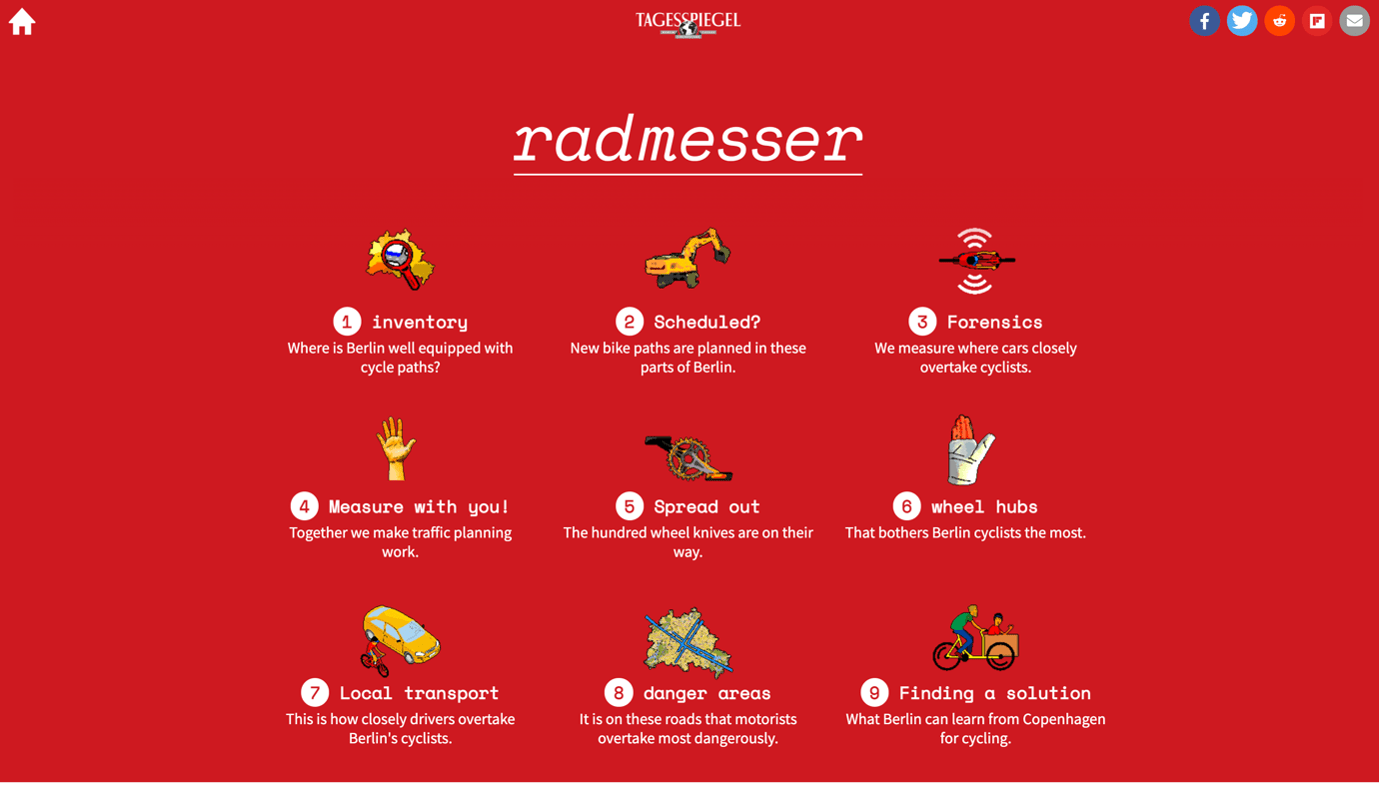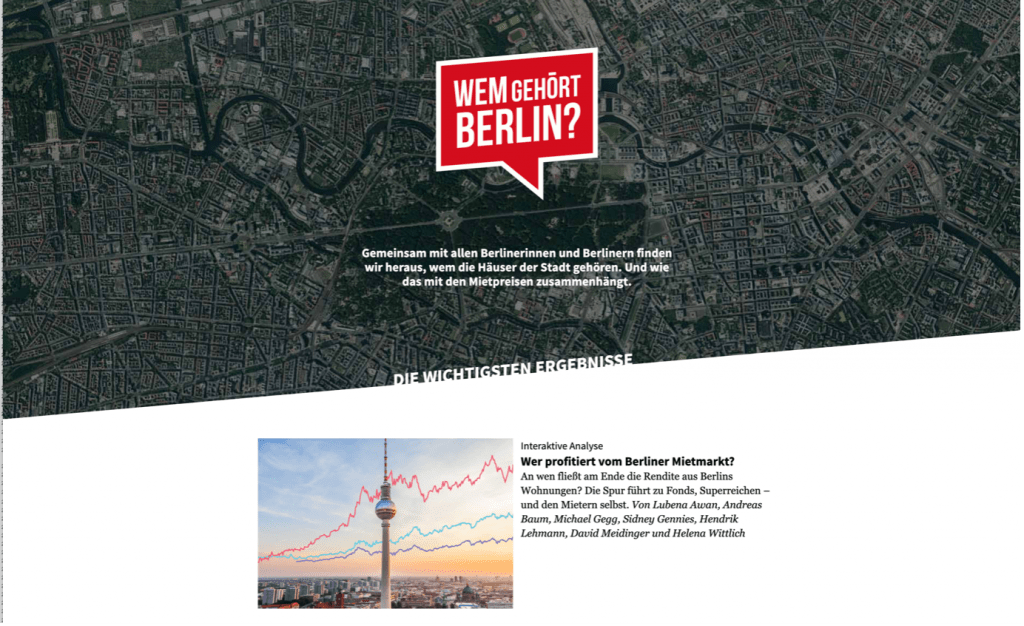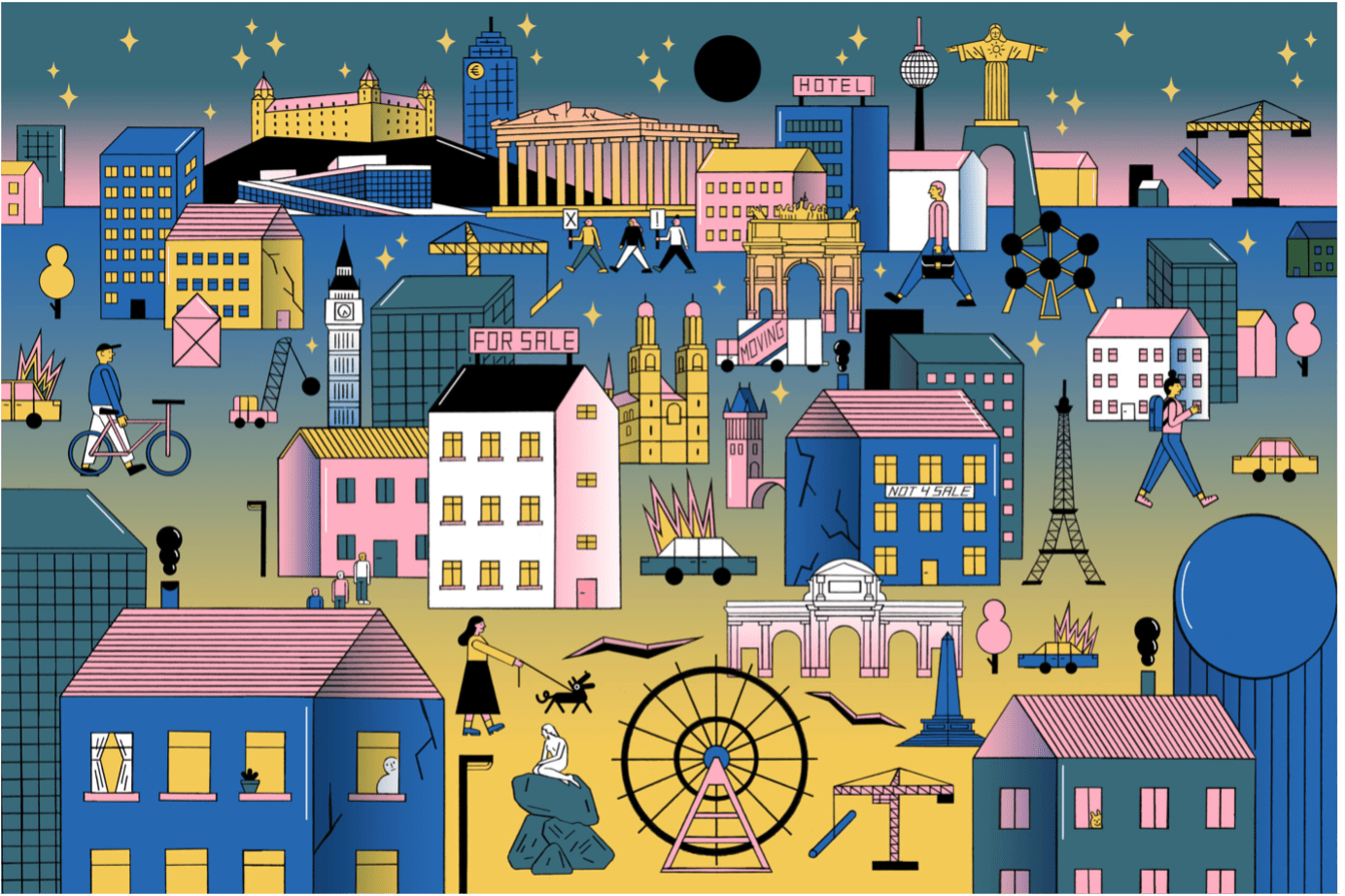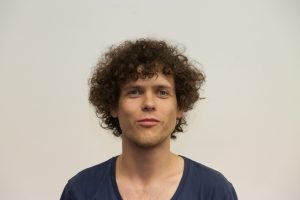Der Tagesspiegel: interdisciplinary and audience-engaged innovation
Der Tagesspiegel’s Innovation Lab is a hub for interdisciplinary collaboration – producing projects spanning sensor journalism, data visualisation and interactive, immersive storytelling.
Led by Hendrik Lehmann, the Lab emerged from a series of individual data journalism projects, and has expanded to produce a range of storytelling and platforms innovations for Der Tagesspiegel’s newsroom operations.
Their work is founded on interdisciplinary collaboration: uniting data analysis, visual and immersive journalism, urban sociology and science journalism to create multiple projects. Lehmann describes the Innovation Lab as open and engaged with partners. These range across NGOs, universities, other publishers, audiences and citizens. Many projects collaborate with Der Tagesspiegel’s readers to enable or further the storytelling, ensuring the lab is ‘reader engaged’ and co-opts citizens into the journalism it creates.
Since starting with an emphasis on data journalism, the lab has expanded to explore a growing range of topics and approaches. Now classed as a news department it its own right, it has a core staff of five people, but Lehmann suggests this number moves and shifts depending on the projects the team is working on. For example, external funding helps to boost the specialist skills in the lab when they’re required.
Notable projects
Although the lab was initially launched in 2019, several members of the team completed a number of high profile and award-winning projects from 2016 onwards. Lehmann highlights two that showcase the aspirations and achievements of the Innovation Lab – the award-winning data / cycling project Radmesser and the investigation Wem gehört Berlin?
That’s not really true unfortunately. „emerged out of a series of individual data journalism projects“

Radmesser: creating a new storytelling approach to Berlin’s cycling system, Radmesser provides interactive content underpinned by data. Audiences navigate and interact with the rich multimedia content. Insights include specific danger areas for cyclists – such as streets where cars pass most closely to cyclists. A key element of the project was to work with audiences to create ‘swarm intelligence’, where users became data collectors. Some 2,500 people volunteered for the project, with 100 people taking sensors and using them. They tracked city routes and their experiences of safety while riding around the city. Radmesser also looked at solutions – what can Berlin learn from cities such as Copenhagen.

Wem gehört Berlin?: Working with an engaged audience and in cooperation with independent and non-for-profit research centre CORRECTIV, and a range of partners, Wem gehört Berlin? explores property ownership throughout the city. It asks which property owners have a significant impact on the housing market and which owners potentially act illegally or questionably? Audiences engaged with the project through completing surveys, and the piece created a range of interactive content exploring the emergent market, ownership structure and how 12 housing companies own 250,000 apartments throughout the city. Interestingly, six of these companies are public companies who share the same investors. The investigation continued beyond the lab as CORRECTIV continued to work with new local media partners.

Cities 4 Rent: Continued as a follow-up to Wem gehört Berlin?. The investigation, conducted two years after the initial project, crossed 16 cities across Europe, some of which are still yet to report. Lehmann explains that the Lab had a further role to create a harmonised visual identity within this project that would be shared between all the partners. The project tracked the rising investments, costs of living and how the investment–rental cycle is making cities increasingly unaffordable.
Beyond these two projects, the lab engages in a variety of work spanning immersive and interactive content. In exploring these platforms, each combining data, data visualisations and rich media, the Innovation Lab has generated its own code base for ‘linear’ content.
Lehmann explains it “became one of our main [activities]; to develop our own kind of code base for linear storytelling that a CMS can’t do”. In this way the lab has a “forerunner function because we can do things that no one can do already with the regular CMS.” He adds this approach has an ‘empowering’ effect for some in the newsroom, allowing journalism in new ways.
Interdisciplinary capacity for innovation
To create these pieces, and the data that underpins them, the Lab has a small group of five staff who bring a range of skills to the innovation work. These include multimedia storytelling, data analysis, coding and design. But Lehmann describes this team as flexible, expanding to pull in different ranges of expertise depending on the project’s requirements and available funding.
This approach also takes advantage of relationships with a range of partners across not-for-profit organisations and universities. These collaborations both inspire new ideas and help to deliver projects that make it beyond the concept or funding stage.

Innovation in the time of Covid
The Covid 19 pandemic consumed much of the lab’s time. Lehmann suggests the data work conducted by the lab has placed it squarely within the operations of Der Tagesspiegel’s newsroom. This work has ranged from creating data-driven pieces and visualisations on the pandemic as it has unfolded, but also in providing essential services to the editorial teams more broadly.
Lehmann explains: “Covid [saw us] become part of the core of the newsroom… Everyone needs to get data every day. So, we developed an internal tool that just allows the print editors to export graphics that are live at the time they need them and the same format… so [this] has really pushed us to the core of the newsroom”.
A further element to the lab is how it’s building up knowledge and experience through the projects it runs. Lehman suggests that over time, these learnings – from both successful and unsuccessful projects – flow into future activities. For example, a project using augmented reality to explore German re-unification provided insights into AR tech, that Lehmann feels can be deployed in projects that utilise augmented reality in the future. These insights also spanned commercial concerns, such as how AR could generate revenue streams.
What next?
Looking to the future, Lehmann suggests that the Lab will continue to work on some of the key areas it’s developed over recent years as such urban planning, residential ownership, traffic, social networks and to engage readers to help them tell the stories they cover.
“Urban traffic, the mobility revolution, housing. Because it’s going to be a new expression of our times.”
New projects involving climate change and policy in Africa, machine learning and to focus on advanced data analysis and visualisation.
CONTACT POINT

Hendrik Lehmann, head of Der Tagesspiegel Innovation Lab
Twitter: @plateauton
